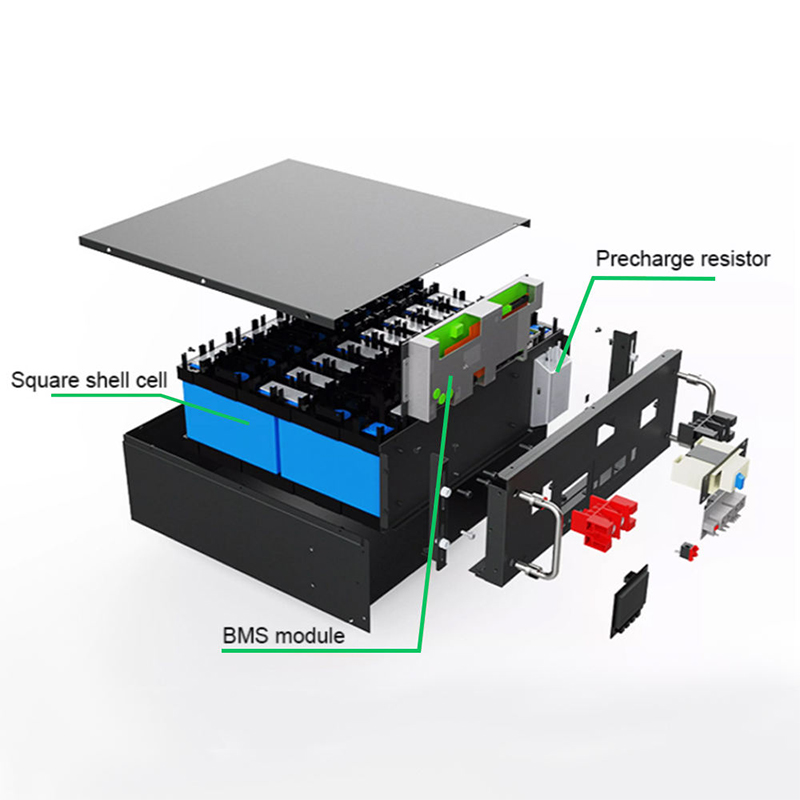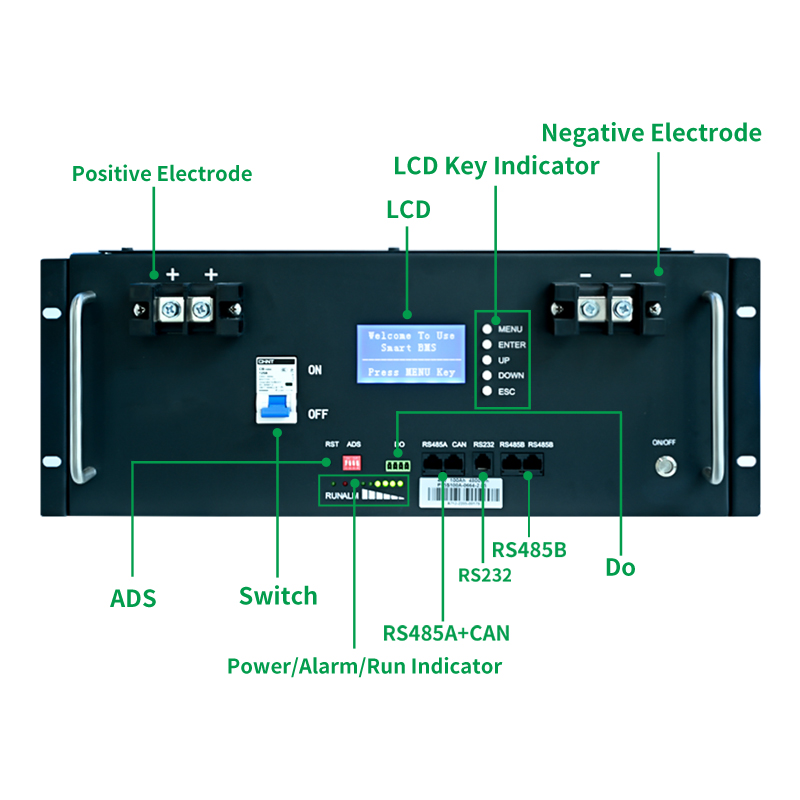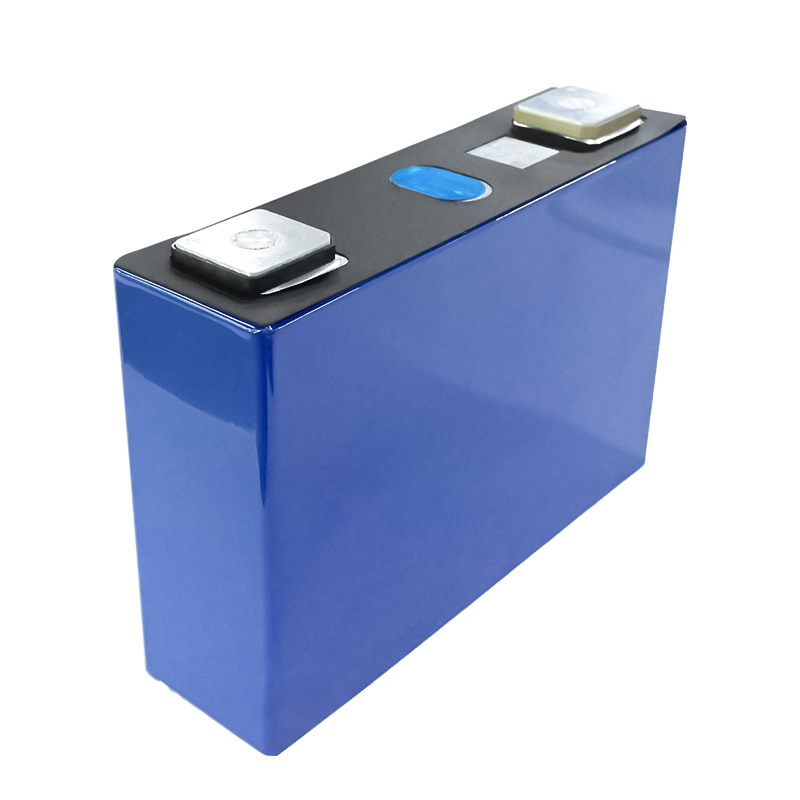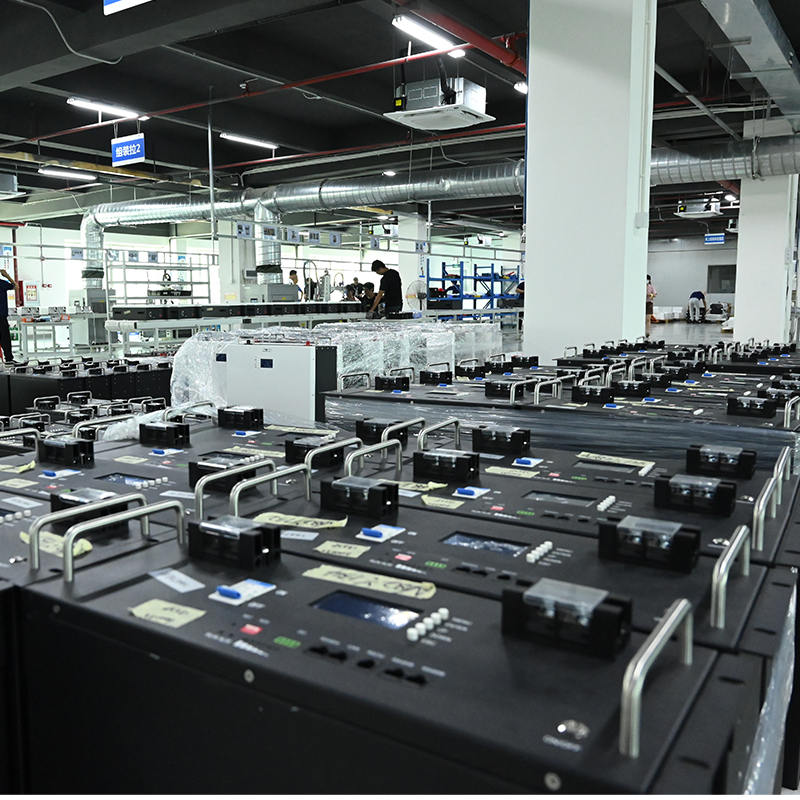Racking lithium batteries refers to the process of arranging and organizing them in a specific configuration to create a battery bank. This is commonly done in applications that require a larger capacity and higher voltage than what a single lithium battery can provide. When racking lithium batteries, it's important to consider safety measures and the specific requirements of the batteries you are using.
Brand:
SunArkMax charging current:
100AOperation Voltage:
42-54VdcLife cycles (80% DOD, 25%):
6000 CyclesLithium battery standard:
UL1642.IEC62619.UN38.3.ROHS.CE-EMCOperation temperature:
20°C to 60°C @60+-25% Relative HumidityStorage temperature:
o°C to 45*C @60+/-25% Relative HumidityStorage time / temperature:
5 months @ 25°C. 3 months @ 35*C: 1 month @ 45°C
What components are included in our lithium battery?
Lithium Cells: The primary component of a lithium battery is the individual lithium cells.
Battery Management System (BMS): The BMS is an important component that ensures safe and efficient operation of the rack lithium battery.
Electrical Connections: Inside the rack lithium battery, there are electrical connections that link the individual lithium cells together in a series or parallel configuration.
Cooling System (Optional): In some larger rack lithium battery systems, especially those designed for high-power applications, a cooling system may be included.
Structural Components: The rack housing itself provides the structural support for the battery bank.

What's the function of energy storage lithium battery?
The function of a rack lithium battery is to provide electrical energy storage in a rack configuration for applications that require a larger capacity and higher voltage than what a single lithium battery can offer. Here are some key functions of a rack lithium battery:
Energy Storage: Rack lithium batteries serve as a means of storing electrical energy for later use.
Power Backup: Rack lithium batteries are commonly used as backup power systems in applications where a continuous and reliable power supply is critical.
Load Leveling and Peak Shaving: Rack lithium batteries can help balance the supply and demand of electricity in systems that experience fluctuating energy loads.
Renewable Energy Integration: Rack lithium batteries play a crucial role in renewable energy systems by providing energy storage for intermittent energy sources like solar or wind power.
Hybrid and Electric Vehicles: Rack lithium batteries are commonly used in hybrid and electric vehicles to store electrical energy for propulsion.
Overall, the function of a rack lithium battery is to provide reliable and efficient energy storage in various applications, enabling a more sustainable and flexible use of electrical power.

How many types of different battery cells?
Lithium-Ion (Li-ion): Li-ion cells are widely used in rack lithium batteries due to their high energy density, long cycle life, and excellent performance. They utilize lithium ions to move between the positive and negative electrodes during charging and discharging.
Lithium Iron Phosphate (LiFePO4): LiFePO4 cells are known for their enhanced safety, longer lifespan, and high thermal stability compared to other lithium chemistries. They are commonly used in rack lithium batteries for applications that prioritize safety and longevity.
Lithium Nickel Manganese Cobalt Oxide (NMC): NMC cells offer a balance between energy density, power capability, and lifespan. They are commonly used in electric vehicles and energy storage systems where a combination of high energy and power output is required.
Lithium Titanate (LTO): LTO cells have a unique chemistry that provides fast charging capability, long cycle life, and good performance in extreme temperature conditions. They are commonly used in applications that require rapid charging and discharging, such as electric buses and industrial energy storage systems.
It's important to note that the specific type of lithium battery cells used in a rack will depend on the manufacturer and specific requirements of the application. Each lithium cell chemistry has its own characteristics, advantages, and limitations, so the choice of cell type will vary based on the specific needs of the rack lithium battery system.

How many steps does SunArk produce batteries?
Here are some general steps to rack lithium batteries:
Determine the battery bank requirements: Calculate the desired capacity and voltage for your battery bank based on your application needs.
Select suitable lithium batteries: Choose lithium batteries that meet your requirements and are designed for use in a rack configuration.
Choose a racking system: Select a racking system that is designed for the specific lithium batteries you are using.
Prepare the rack: Install the racking system and ensure it is securely mounted and stable.
Connect the batteries: Install the lithium batteries in the rack, following any guidelines provided by the battery manufacturer.
Configure the battery management system (BMS): If your lithium batteries require a BMS, install and configure it according to the manufacturer's instructions.
Test and verify: Once the batteries are properly racked and connected, perform thorough testing to ensure proper functioning and performance.
Remember that working with lithium batteries can be hazardous if proper precautions are not taken. Always follow the manufacturer's instructions and guidelines, and if you are unsure about any aspect of racking lithium batteries, consult an expert or seek professional assistance.
FAQs:
Q1: Do you support OEM/ODM?
A:Of course, OEM&ODM service is supported with a certain quantity,including customize logo,package and label;
Q2: How long do you usually produce?
A: The lead time is normally 15 working days after order start. but we always prepare some stocks for popular models.
Q3: Do you support DDP door to door?
A:Sure, if you are a personal customer and don't want to deal with the customs, we can provide DDP service to your address.
Q4: What about the warranty and how to claim?
A: Warranty are 10 years since you receive the battery, our professional after-sales team will deal with all warranty issues.